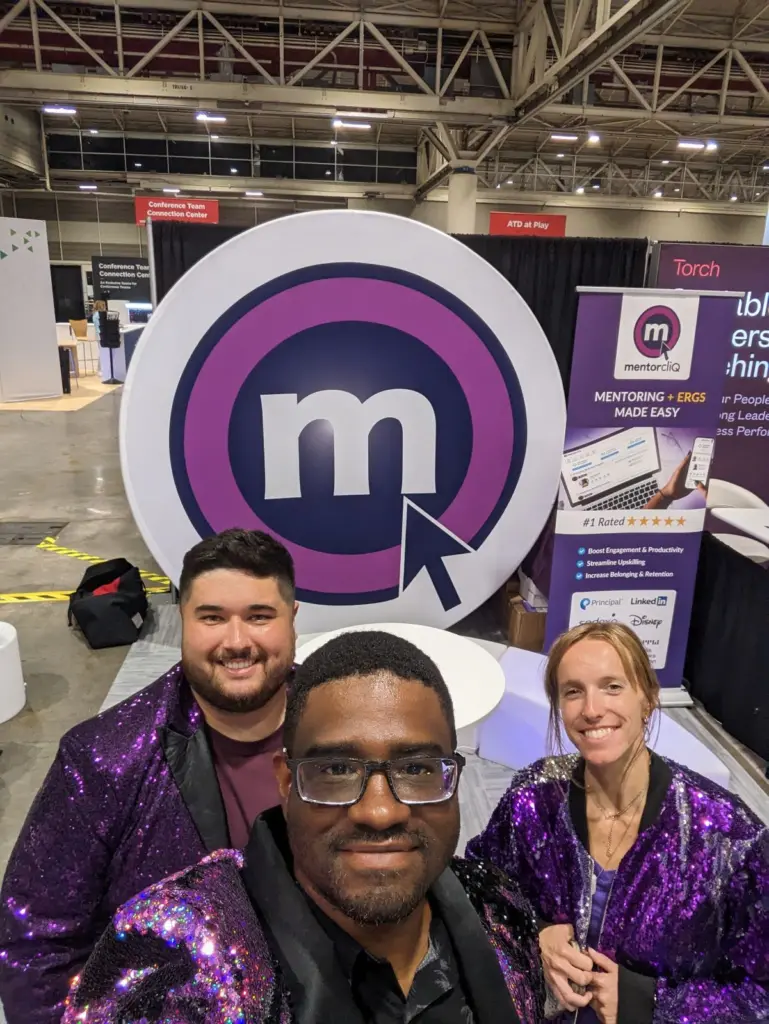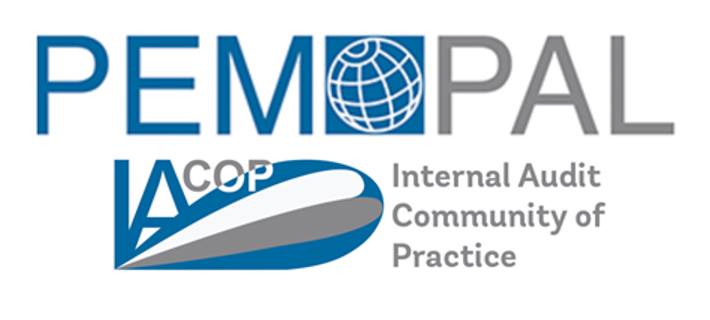I remember the excitement I felt the first time I attended a collaborative session as a high school English teacher. As a K-12 educator, it’s easy to live in a bit of a bubble that’s partially of your own design, partially a consequence of the role. You might snag some lesson plan ideas here or there from your colleagues, but everyone is time-crunched, and you protect your planning time with great fervor. Finding opportunities to learn from more experienced peers requires giving up the time you need to get stuff done (like grading papers). However, most school districts are intentional about creating communities of practice for their educators and carving out that time in the form of professional development days.
Here’s the thing, though: Communities of practice are not unique to K-12 education. In fact, every industry and every job can have communities of practice. What’s more, these communities can be internal to the organization, although they don’t have to be. That’s because a community of practice is an intentional, collaborative group of individuals (usually, but not always) within the same profession who meet to enhance each others’ personal and professional development.
Learning and development happen best when people learn from each other. Consequently, communities of practice are not just essential but something that many organizations are beginning to create for their employees with the intention of ensuring their people are the best in the business.
This post is designed to help you understand a few things about communities of practice:
- A high-level overview of how to define a community of practice (also known as CoP)
- Examples of both internal and external communities of practice
- Advice on how to create a community of practice
Did You Know?
Group and peer mentoring can serve as an internal community of practice! Download our 5 Steps to Create a Mentoring Program to get started!
Community of Practice: Definition
A community of practice is a group of professionals who are organized to meet with the intent of personal and professional development. Typically, a community of practice is structured around a specific industry, function, or role. However, a community of practice can be much broader than that and can encompass different affinities, as well.
To determine if something is a community of practice (CoP), here is a simple checklist that you can use to see if a group you’re considering creating, joining, or assessing meets the criteria:
- A common domain of interest: There should be a shared interest, problem, or challenge that unites the group. This could be a specific industry, software program, teaching approach, or anything else that brings people together.
- Shared practices: CoP members develop and share ideas and ways of doing things, best practices, and resources related to the shared domain of interest. This can involve discussions, workshops, online forums, or other methods of knowledge exchange.
- Community of 2 more people: There should be a sense of community among members. This involves interaction, collaboration, and a willingness to help each other learn and grow.
We recommend you keep this short list of criteria in your back pocket. Now that you know what a community of practice is, you’ll likely start noticing more of them!
Examples of Communities of Practice
Let’s put into practice what you just learned above about how a community of practice is defined and its basic criteria.
3 levels of CoPs
There are multiple levels of a community of practice. They can be exceptionally large, such as international associations, or exceptionally small, such as three professionals having a weekly Zoom call to help discuss new practices, new knowledge, and technical know how, for example.
For better and easier categorization, let’s split communities of practice into three distinct levels:
Level 1: Associations
Associations are large, sometimes internationally-centered communities that host a variety of different collaboration structures. These can include, but are not limited to, group forums, hosted talks, and large or small events. Associations typically require some type of membership to take part in all that the community has to offer, but that’s not always the case. Many associations invite participation from non-members, with limitations.
Examples of associations aligned with learning and development professions include:
- Association of Talent Development (ATD)
- Society for Human Resource Management (SHRM)
- Human Capital Institute (HCI)

In 2024, I attended ATD’s annual conference. As with most large association conferences, the location rotates to different cities. This year, I was in New Orleans (where I was living at the time), which made it easy enough for me to get to. ATD’s conference highlights all of the reasons why someone might join a Level 1 community of practice: there were dozens of sessions, thousands of attendees, and amazing opportunities to learn and network.
(Never mind the fact that I got to be glitzy as heck, but that’s another matter altogether). There’s a clear benefit to making an association part of your community or practice, as they tend to have the membership size and the resources to ensure you have access to others who can help you learn and develop within your profession.
That said, association membership does come at a cost. That cost can be prohibitive to some professionals unless their company is footing the bill.
Another great example of a Level 1 CoP is the Public Expenditure Management Peer-Assisted Learning network, or PEMPAL in short. First conceptualized way back in 2006 by the World Bank and the United Kingdom’s Department for International Development*, PEMPAL is a network that, in their own words, “facilitates exchange of professional experience and knowledge transfer among public finance management (PFM) practitioners across the Europe and Central Asia (ECA) countries.”

PEMPAL activities are organized in 3 CoPs: Budget Community of Practice, Internal Audit Community of Practice, and Treasury Community of Practice—all of which use peer-to-peer learning as the main instrument, in-person and virtually, among public financial management practitioners across the governments of 23 countries in the Europe and Central Asia (ECA) region to share knowledge and develop approaches to solving challenges and strengthening practices.
As you might already be able to tell, this is a massive, massive network of those whose work involves the design, preparation, and implementation of finances and funds at the national level, impacting thousands of lives in their country. What is truly fascinating is that despite the high stakes of their work, these practitioners rely on each other to learn and grow. This speaks volumes about how powerful a community of practice can be.
Level 2: Corporate and company-sponsored development communities
Companies and organizations often create their own, internal groups to support learning and development across and within functions. These internal communities of practice are essential not only because they leverage internal knowledge and expertise but also because they are excellent at protecting and growing company culture, reducing employee turnover, increasing employee productivity, and preserving institutional knowledge.
These communities are established and supported by organizations for their employees’ personal and professional growth. They provide targeted learning opportunities, peer-to-peer support, and networking within a specific company or industry.
Examples of company-sponsored communities of practice include:
- Mentoring programs (especially group mentoring and mentoring circles)
- Employee Resource Groups
- Business Resource Groups
The great thing about Level 2 CoPs is that they’re distinctly ubiquitous, easy to create, and ultimately low cost per employee, especially at scale. In many companies, for example, ERGs are employee-created, led, and operated. While we don’t recommend it, 21% of employee resource groups run without an ERG budget at all, meaning they’re a community of practice strategy that costs companies almost nothing to create and maintain.
However, whether you launch ERGs or mentoring programs, proper structure and matching are essential to making them highly effective, measurable, and sustainable. Mentoring and ERG software increase participation, create visibility across those programs, reduce administrative time and effort, and help tie those programs to key business objectives.
💡 Did you know? Companies using MentorcliQ’s software see an average 32% reduction in turnover, and those running ERGs and Mentoring programs see an average decrease in retention of 62%. I definitely recommend you book a demo to see how this magic combination of communities of practice leads to incredible impacts on your teams!
One very important point I want to stress here is that supporting Level 2 or internal CoPs does not mean that you (ahem, management) can expect and control learning, innovation, and outcomes in a linear or predictable way. After all, a strong community of practice does thrive on more organic, dynamic, and emergent interactions that evolve naturally over time.
Level 3: Independent forums and groups
When I switched from teaching to freelance writing (the role I did full-time before joining MentorcliQ), I built my writing career pretty much solo. It wasn’t until I was very well established and ready to give back that I discovered various freelance writer communities, particularly /r/freelancewriters on Reddit.
Since then, I’ve contributed a ton of content, and benefited from a ton of content. Forums such as that are a perfect example of a Level 3 community of practice. A Level 3 CoP are those informal communities that form organically, are typically free, and can exist in any medium, from small in-person groups to online forums on social media.
Level 3 communities of practices are a great starting point for individuals who are just starting out in a field, or who really want to give back to others within their field or profession but outside of the framework of their immediate workplace.
Examples of Level 3 communities of practice include:
- Online forums and discussion boards (Reddit, Stack Overflow)
- Social media groups (LinkedIn, Facebook, Discord)
- Independent meetups (sometimes organized through MeetUp)
For example, let’s say the baristas in your city decided to start a collaborative group for other baristas called “Drip It Like It’s Hot.” Each week, that group has topical discussions relevant to the world of baristas, such as roasting temperatures, foaming strategies, and, of course, demonstrations and practices in latte art.
This group (which I would love to be a part of, despite not being a barista myself) would be considered a community of practice. It would fit the most basic criteria required for a CoP:
- Common domain of interest (brewing and serving caffeinated beverages)
- Shared practices (especially latte art)
- Community of 2 or more people (because few latte artists are self-taught)
There’s a certain beauty in not only joining but also starting Level 3 communities of practice. They give access to individuals who, due to life circumstances, may not be able to join a Level 1 or Level 2 CoP. They are distinctly personal in nature, usually without the rigors and requirements common with the higher-level communities.
That said, some Level 3 communities of practice may still have membership requirements and, at times, may still require membership fees or dues. But they’re more likely to be local, and that makes them a great place to grow friendships within your own hometown or city.
How to Create a Community of Practice
Now that you’re familiar with how to define a community of practice and how they’re categorized, let’s take this one step further and briefly cover how to create a community of practice.
Creating a CoP is a strategic endeavor aimed at fostering collaboration, knowledge sharing, collective learning, and professional development among individuals with shared interests or goals. Here are a few steps to consider as you build out a community of practice:
Define your purpose and scope
Before diving into creating a community of practice, clarify its purpose, goals, and scope. Determine the domain or topic of interest around which the community will revolve. Define what community members hope to achieve by participating in the CoP, whether it’s professional development, skill enhancement, problem-solving, or networking.
Identify potential CoP members
Identify individuals within your organization or industry who share a common interest or role relevant to the specific focus of the CoP. Look for enthusiastic participants who are willing to contribute, engage, and interact regularly. Consider diverse perspectives and backgrounds to enrich discussions and learning experiences.
Establish guidelines and structure
Develop clear guidelines and expectations for participation, communication, and collaboration within the CoP. Define how often and where meetings or interactions will occur, whether in-person or virtually. Establish norms for sharing resources, asking questions, and providing feedback to create a supportive and inclusive environment.
Select communication and collaboration tools
Choose appropriate tools and platforms to facilitate communication and collaboration among CoP members. This may include email lists, online forums, social media groups, video conferencing tools, or dedicated collaboration software. Ensure that the selected tools align with members’ preferences and accessibility needs.
Promote engagement and participation
Encourage active participation and engagement within the CoP through various initiatives and activities. Schedule regular meetings, workshops, or webinars to discuss relevant topics, share insights, and exchange best practices. Foster a culture of knowledge sharing and mutual support where all members feel valued and heard.
Facilitate knowledge sharing and collective learning
Create opportunities for knowledge sharing and learning within the CoP by organizing skill-building sessions, guest speaker events, or peer mentoring programs. Encourage members to contribute their expertise, experiences, and resources to benefit the entire community. Foster a collaborative learning environment where members can learn from each other’s successes and challenges.
Evaluate and adapt
Continuously evaluate the effectiveness and impact of the CoP in achieving its goals and meeting the needs of its members. Solicit feedback from participants through surveys, focus groups, or one-on-one discussions to identify areas for improvement. Adapt the structure, activities, and resources of the CoP based on feedback and changing needs to ensure its long-term sustainability and relevance.
Make This Process Easier with Software
All of the above steps are distinctly necessary if you want to create a functional community of work that’s rewarding to participants and effective for the company sponsoring the group. But for you, the organizer, it’s likely going to be a lot of work, especially if you’re focused on taking an ERG or mentoring approach to your CoP within a corporate environment.
Companies like Disney, AMD, Cardinal Health, and Sodexo have actually all been in your shoes. Ultimately, they landed on MentorcliQ’s mentoring software to help them launch, match, engage, and measure the results of their learning engagements, including mentoring programs and ERGs.
Communities of practice are too important to get wrong, and engagement in those programs at work can make the difference between an employee who grows and stays and one who stagnates and quits.
Book a demo to learn more about how mentoring and ERG software make communities of practice something everyone at your company gets to enjoy.




